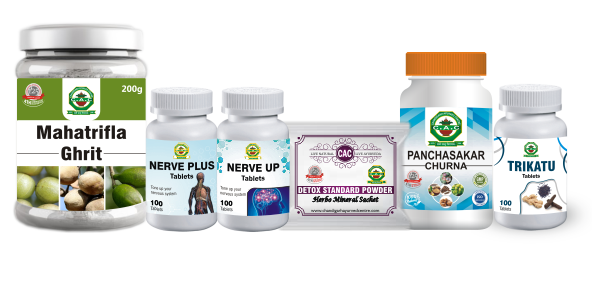
Cataract
- June 26, 2019
- Posted by Dr. Vaidya Karanvir Singh
- 0 Comment(s)
A condition of the eye in which the lens of the eye becomes cloudy is called cataract. This causes vision to worsen, making it especially difficult to see fine details clearly. Some people’s vision is only slightly affected, whereas others might lose their eyesight very quickly. Its progression will depend on things like the exact type of cataract.
Cataracts mostly affect people over 50, and the risk increases with age: About 20 out of 100 people between the ages of 65 and 74 have a cataract.
Mostly cataract is related to aging. Cataract condition becomes very common in older people. A cataract can occur in one eye or both eyes. A person with a cataract in one eye usually goes on to succeed a cataract in the other eye as well.
A cataract condition is not contagious, non-communicable and cannot spread from person to person.
Table of Contents
What are the Causes of Cataract?
There are several underlying causes of cataract. These include:
- Smoking
- Ultraviolet radiation
- The long term use of steroids and other medications
- Diabetes
- Trauma
- Radiation therapy
- Overproduction of oxidants, which are oxygen molecules that have been chemically altered due to normal daily life.
What are the Signs and Symptoms of Cataract?
A Cataract may cause various complaints and visual changes, such as including blurred vision, difficulty with glare.
A change in glasses helps at the outset once vision begins to change from cataract, however as cataracts continue to progress and opacify, vision becomes cloudy and stronger glasses or contact lenses will no longer improve sight.
Cataracts are usually gradual and usually not painful or associated with any redness or other symptoms unless they become extremely advanced.
Sign and Symptoms of Cataracts can include:
- Poor vision in sunlight.
- Cloudy, blurry, foggy or filmy vision
- Noticeable cloudiness in the pupil
- Double vision or halos around lights
- Frequent changes in eye prescriptions
- Impairment of color vision
What is the Ayurvedic view of Cataract?
According to Acharya Sushruta vision depends on healthy Drishti. When vitiated doshas localize in different patalas of drishti it may result in various visual abnormalities and finally loss of vision.
This is called as timira in initial stage and lingnasha ahead of time. Kapha doshas are for the most part in charge. There are therapeutic medicines for cataract without surgery. Alongside drugs, way of life adjustments is additionally critical.
In Ayurveda cataract is related to timira or linga nasha. Exasperated vata is thought to be in charge of the sign of this infection. One of the properties of vata is to influence things to go away. At the point when the focal point of the eye loses its straight forwardness, the vision ends up noticeably blocked. This condition is called a cataract.
What is the Ayurvedic Treatment of Cataract?
Cataract is the increasing problem so always try to take ayurvedic treatment for it. Ayurvedic treatment provides long-lasting results without causing any side effects on the body. Chandigarh Ayurved Centre introduces a kit known as “Cataract Go Kit” for complete treatment of cataract.
All Products Description in detail is mentioned below:
1. Mahatriphala ghrita:
Mahatriphala ghrita is a polyherbal Ayurvedic formulation. This ghrita contains Haritaki (Terminalia chebula), Bibhitaki (Terminalia bellirica), Amla (Emblica officinalis), Bhringraj swarasa (Eclipta alba), Shatavari (Asparagus racemosa), vasa (Adhatoda vasica), Guduchi (Tinospora cordifolia), Ajakshira, etc. These herbs shows anti-diabetic, anti-obesity, anti-inflammatory, antimicrobial, rejuvenating, antioxidant and neuro-protective properties. This helps in conjunctivitis, glaucoma, weak vision, myopia, eye pain, Dry eye, cataract, etc.
Recommended Dosage: Take 1 teaspoonful twice daily.
2. Nerve up tablet:
These tablets are pure ayurvedic formulation. Nerve up tablets help in balancing the vata doshas and kapha dosha. It acts as nervine stimulant. It shows effective results in improving the central nervous system. It contains natural ingredients like shudha kuchala, shudha shilajeet, abhrak bhasma, praval pishti, shankh bhasma etc. This tablet helps in Backache, kneepain, headache, bronchitis, depression and eye pain.
Recommended Dosage– Take 1 tablet twice daily.
3. Nerve Plus tablet:
These tablets shows Anti-bacterial, Anti-inflammatory, Antioxidant, Analgesic and immune-modulator properties. It contains herbal ingredients Ghritkumari (Aloe barbadensis), Kali mirch (Piper nigrum), Giloy satav (Tinospora crdifolia), shudha kuchala, shudha shilajeet, shudha vatsnabh, shudh singraf. It is beneficial for migraine, lower back pain, rheumatoid arthritis, gout, stimulating nerves and appetite.
Recommended Dosage – Take 1 tablet twice daily.
4. Detox Standard Powder:
The powder contains a combination of natural and pure herbs which is the best remedy for the treatment of all eye problems. Detox standard powder contain ingredients such as– Parwal pishti, Giloy satav, Shankh bhasam, Sutshekhar ras, Sudhyog tab, Shwet parpati, Gandhak rasayan, Akik pishti, Jahar mohra, Moti pishti. This powder is used for the treatment of eye floaters and eye infections. It helps to treat cloudy vision, blurred vision, difficulty in seeing in the dark, fuzzy spots, etc.
Recommended Dosage: Take 1 sachet twice a day with normal water.
5. Trikatu Tablet:
Trikatu Tablet helps to eliminate excess Kapha or mucous from the body, supports respiratory system, helps to take out impurities from the body, supports healthy detoxification. It shows anti-inflammatory, analgesic, expectorant, antioxidant properties. This tablet is made up of equal parts of three herbs such as Pippali (Piper longum), Shunthi (Zingiber officinale), & Marich (Piper nigrum) that maintains the metabolism in the body. It is an Appetizer and it improves digestion, supports normal gastric function, and deal with all signs & symptoms related to cataract patients. It provides an effective and long lasting results.
Recommended Dosage: Take 1 tablet twice daily.
6. Panchasakar Churna:
Panchsakar Churna is an Ayurvedic formulation that consists of five ingredients named as – Saindhav Lavana – (Rock salt), Swarnapatri – (Cassia angustifolia), Shatapushpa – (Anethum sowa), Shunti – (Zingiber officinale), Balaharitaki – (Unripe fruits of Terminalia chebula). Panchasakar Churna is naturally detoxifying, thus it removes the toxins from the body. The churna has anti-inflammatory properties due to which it can reduce the swelling. This churna also have good result in improving vision and provide an effective result to cataract patients.
Recommended Dosage: Take 1 teaspoonful with Luke warm water at bedtime.
What is the Panchakarma Treatment for Cataract?
In Panchakarma there are various therapies for cataract patient mentioned in detail below:
- Akshi tarpan: It is also called as nertabasti. Akshi refers to eyes (netra =eyes) and tarpan stands for nourishment (basti means retaining something inside). This procedure is called kriyakalpa for eye disease in Ayurveda. Kriya kalpa literally means treatment. Akshitarpana is eye care therapy. In this procedure the person is made to lie down and a dough ring prepared out of blackgram is applied around the eyeball of the patient. A medicated ghee is made lukewarm (around 27 degree Celsius). A Person is instructed to close the eyes and then medicated ghee is poured till it covers the eyelashes. The person is instructed to blink the eyes. This therapy helps in improving the eyesight of the person and curing inflammation, redness, itching like problems of the eyes. The procedure is done for 30 minutes.
- Triphla seka and aschyotan panchkarma for eyes: Seka and aschyotan are very significant procedures used in eye disease. Triphala seka means washing of eye with medicated liquid. Aschyotan means applying the medicated liquid. Seka is pouring liquid in this stream continuously for a period of time in all eye disease. Duration of seka is 10 minutes. In the disorder of rakta and pitta, ropana seka is done for 6 minutes. Aschyotan is always to be done in day time only. In this procedure, the person is made to lie in a place without breeze, his eyes opened with the left hand. Medicine dispenser, either a shea shell or awick is held in the right hand of the doctor.10 to 12 drops should be instilled in just two fingers above the inner canthus. Aschyotan with triphala kashya cures all abhishyanda.
- Nasya – Nasya has duel action i.e. pacificatory and purificatory and it promotes the strength of indriya. Anu tail nasya is specially recommended by the Charka Acharya as preventive measures for Urdhava jatrugata vikara.
Healthy Tips & Diet for Cataract Patients
- Include green vegetables, fruits, whole grains, brown rice in your daily diet.
- Avoid processed & fast food items.
- Drink plenty of water.
- Eat fresh fruit of Amla daily.
- Drink green coconut water, carrot juice, beetroot juice, & apple juice.
- Few exercises like Palming, blinking, rotational viewing, near and distant viewing, viewing upward and down simultaneously are good for your vision. Regular practice of these yoga eye exercises helps to relax eyesight.
- Daily practice of anulom vilom pranayam that helps in curing cataract.

Dr. Vaidya Karanvir Singh is the younger Vaidya in Chandigarh Ayurved & Panchakarma Centre. He is the fourth generation in his family who is practicing as a general consultant in Ayurved & Panchakarma treatment at Chandigarh. In his practice, he had treated more than 1 Lakh Plus patients worldwide.



